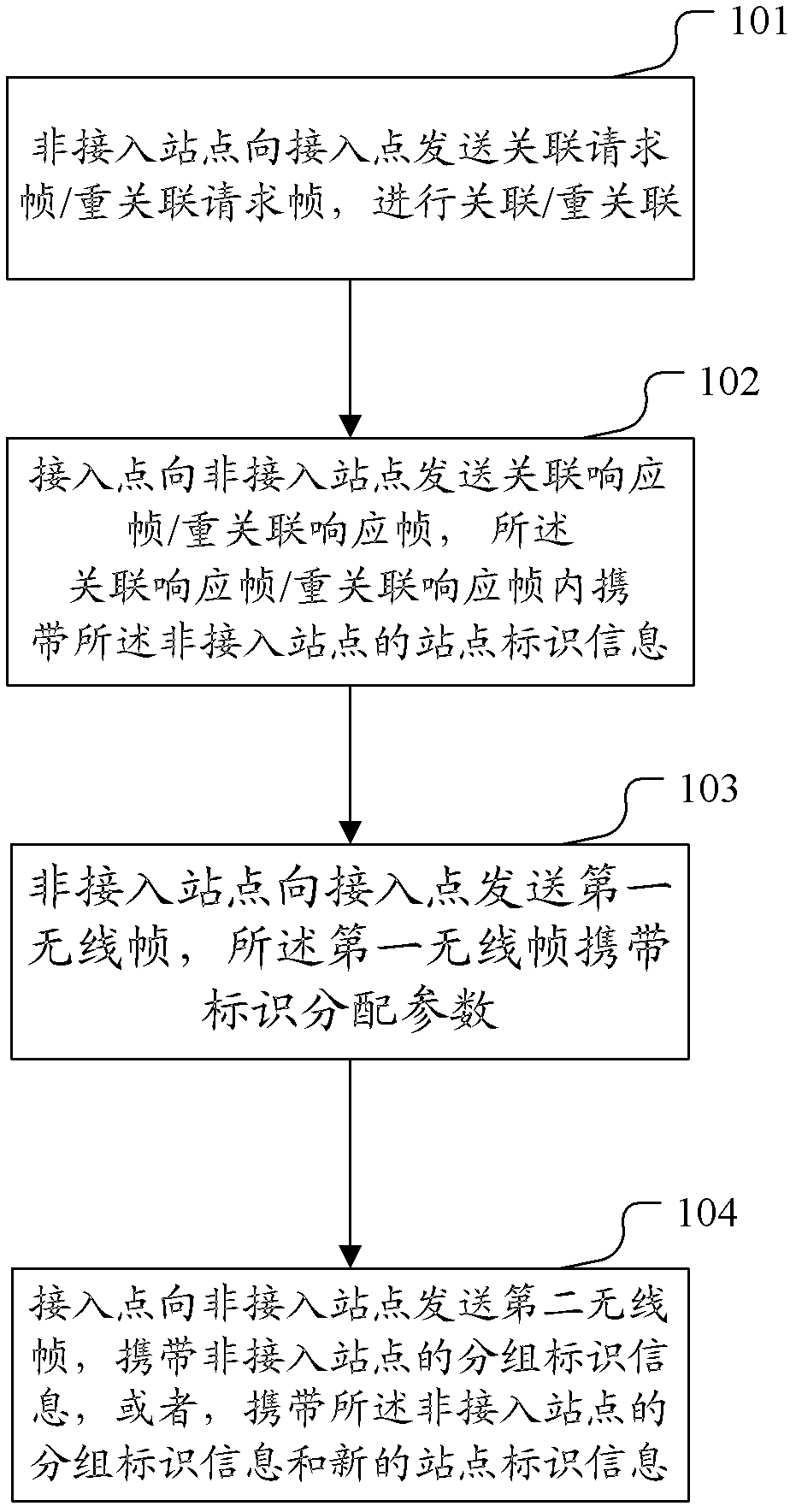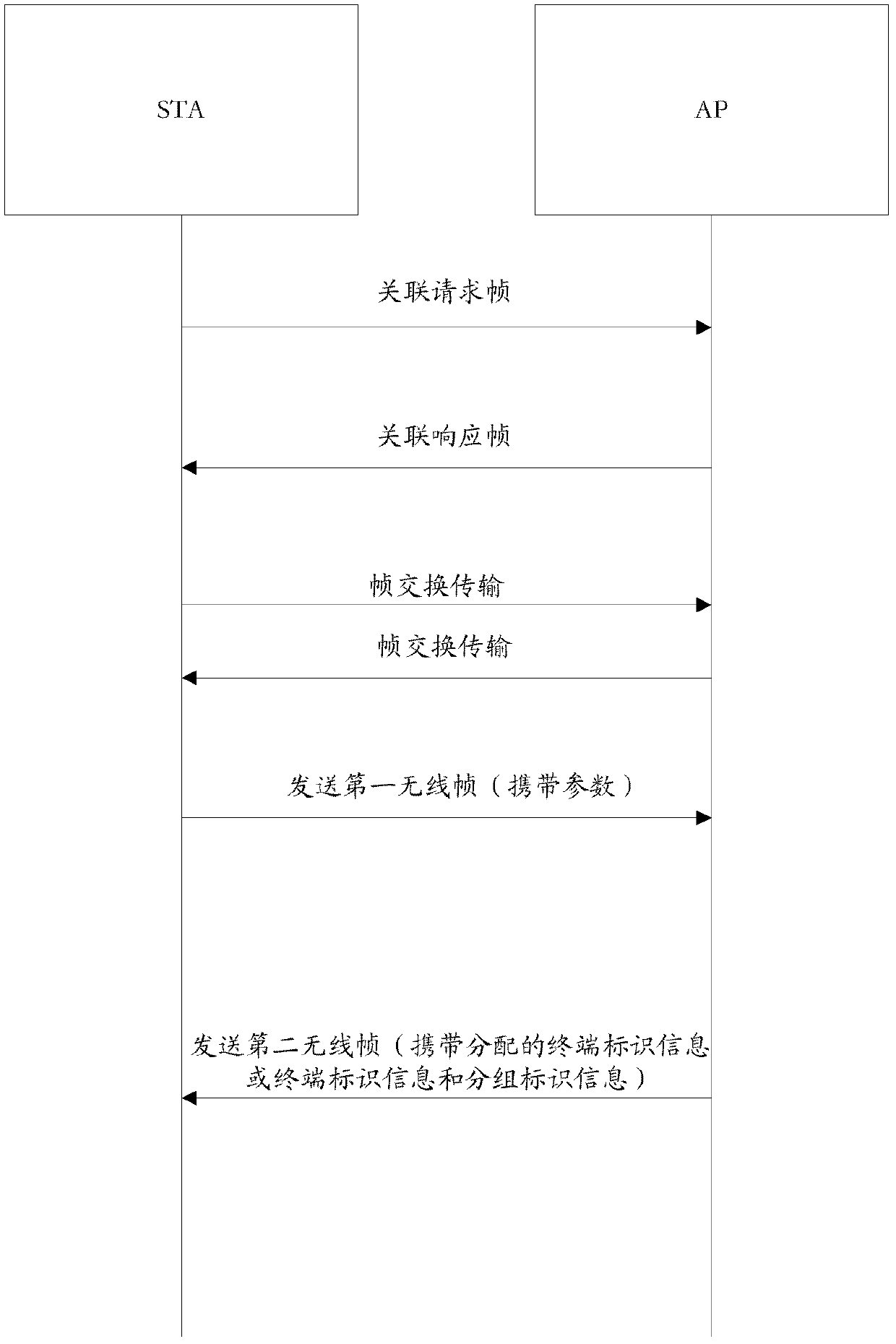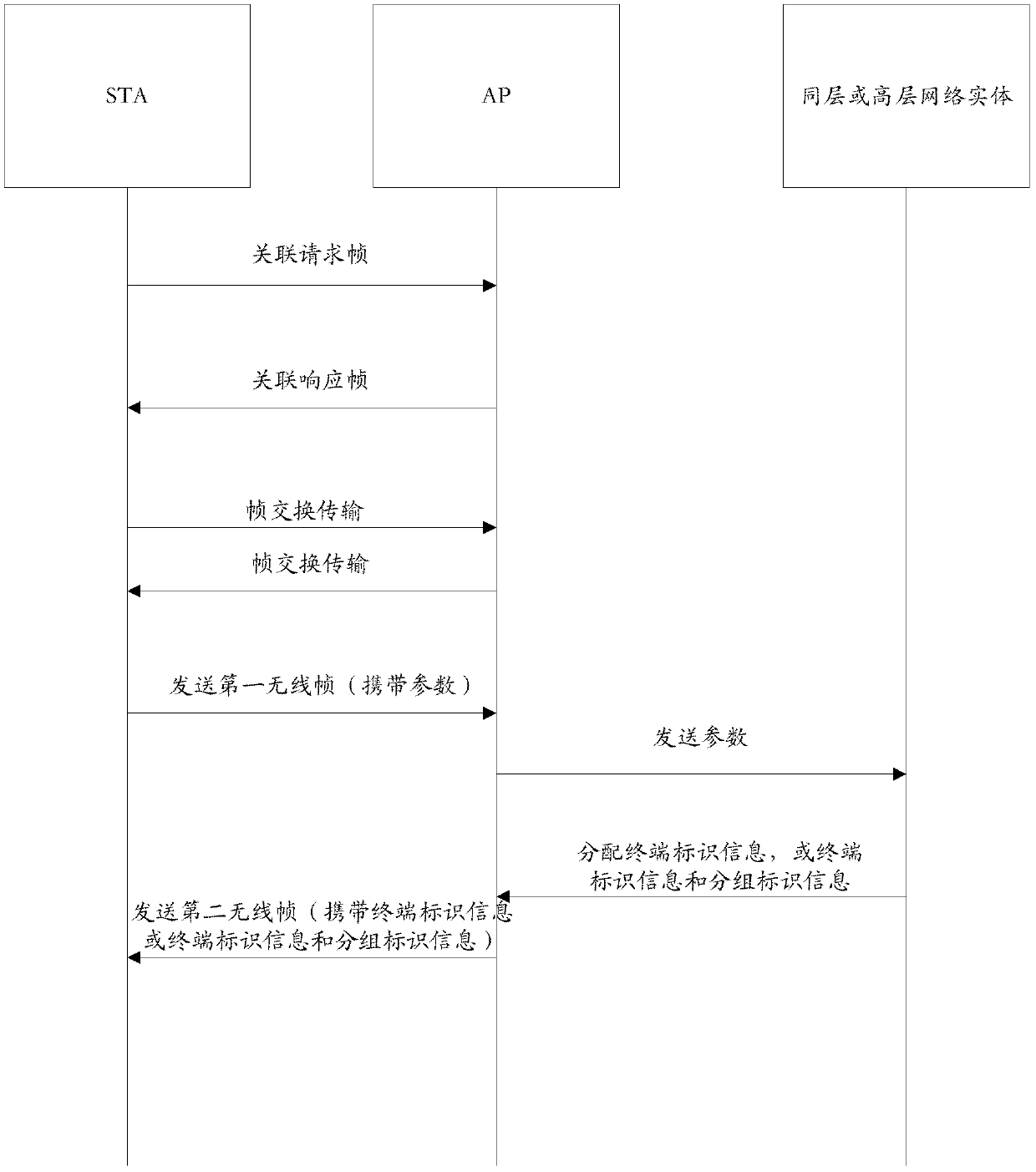An identification distribution method and system
A technology of identification allocation and group identification, which is applied in the direction of broadcast service allocation, transmission path sub-channel allocation, machine-to-machine/machine-type communication services, etc., which can solve the shortage of AIDs and achieve the effect of avoiding the shortage of AIDs
- Summary
- Abstract
- Description
- Claims
- Application Information
AI Technical Summary
Problems solved by technology
Method used
Image
Examples
Embodiment 1
[0077] This embodiment is an embodiment of allocating terminal identification information to STAs after the association process.
[0078] Specifically, the STA sends an Association Request frame (Association Request frame) to the AP for association, and after receiving the Association Request frame, the AP sends an Association Response frame (Association Response frame) to the STA, and carries in the Association Response frame as the The site identification information (Asociation ID) assigned by the STA;
[0079] After the association ends, the STA uses the AID to exchange frames with the AP. The STA sends a first layer message to the AP, and in response to the first layer message sent by the STA, the AP sends a second layer message to the STA, or the AP actively sends the second layer message to the STA. The above-mentioned first and second high-level messages refer to messages defined by the media access control layer or network entities above it, and can be transmitted be...
Embodiment 2
[0083] This embodiment is an embodiment of allocating terminal identification information to STAs after the re-association process is completed or during the re-association process.
[0084] Method 1: STA sends a reassociation request frame (Reassociation Request frame) to AP, and after receiving the Reassociation Request frame, AP sends Reassociation Response frame to STA, and the Reassociation Response frame carries an AID allocated for the STA. After the re-association is complete, the STA uses the AID to exchange frames with the AP.
[0085] After the re-association ends, the STA sends a first-layer message to the AP, and in response to the first-layer message sent by the STA, the AP sends a second-layer message to the STA, or the AP actively sends a second-layer message to the STA. The first high-level message includes at least one of the following parameters: STA application category, equipment vendor identification information, STA power saving capability parameters, an...
PUM
 Login to View More
Login to View More Abstract
Description
Claims
Application Information
 Login to View More
Login to View More - Generate Ideas
- Intellectual Property
- Life Sciences
- Materials
- Tech Scout
- Unparalleled Data Quality
- Higher Quality Content
- 60% Fewer Hallucinations
Browse by: Latest US Patents, China's latest patents, Technical Efficacy Thesaurus, Application Domain, Technology Topic, Popular Technical Reports.
© 2025 PatSnap. All rights reserved.Legal|Privacy policy|Modern Slavery Act Transparency Statement|Sitemap|About US| Contact US: help@patsnap.com



